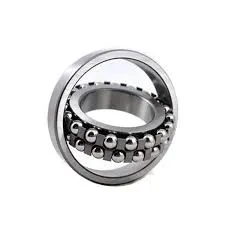
Dec . 22, 2024 16:58 Back to list
ball bearing axial load
Understanding Axial Load in Ball Bearings
Ball bearings are critical components in various machinery and equipment, playing a vital role in enabling smooth rotational movement while supporting axial and radial loads. One of the key aspects of ball bearing performance is the concept of axial load. This article will explore the definition of axial load, its significance in ball bearing applications, and the factors that influence the axial load capacity of ball bearings.
What is Axial Load?
Axial load, also known as thrust load, is a force acting along the axis of a bearing. In other words, it is the load that is applied in the direction parallel to the shaft or axis of rotation. Ball bearings are designed to accommodate both radial loads (forces acting perpendicular to the axis) and axial loads. The ability of a bearing to support axial loads is essential for applications where the direction of the load changes frequently, such as in automotive, aerospace, and industrial machinery.
Importance of Axial Load Rating
Each ball bearing has a specific axial load rating, which indicates the maximum load it can safely support in the axial direction without experiencing premature failure. Understanding this rating is crucial for engineers and designers when selecting bearings for specific applications. Exceeding the axial load capacity can lead to excessive wear, increased friction, overheating, and ultimately premature bearing failure, which can have serious implications, including equipment downtime and costly repairs.
Factors Influencing Axial Load Capacity
Several factors influence the axial load capacity of ball bearings, including
ball bearing axial load

1. Bearing Design The design of the ball bearing itself plays a significant role in its capacity to handle axial loads. Different types of bearings, such as angular contact ball bearings, are specifically engineered to support higher axial loads compared to standard deep groove ball bearings. The alignment and the angle of the balls also affect how axial loads are distributed within the bearing.
2. Material Used The materials from which the bearing is made can greatly influence its performance. High-quality steel alloys or ceramic materials are commonly used in bearing manufacturing to enhance strength and reduce the likelihood of deformation under axial loads.
3. Lubrication Proper lubrication is crucial for maintaining the performance of ball bearings under axial loads. Lubricants reduce friction and wear, ensuring that the bearing can operate smoothly and support the loads applied to it. Insufficient lubrication can lead to overheating and increased chances of failure.
4. Operating Conditions The environment in which the bearing operates can also impact its axial load capacity. Factors such as temperature, humidity, and the presence of contaminants can affect the integrity of the bearing material and its lubrication. Bearings operating in harsh conditions may require specialized designs or additional protective measures.
5. Load Direction and Magnitude The manner in which the axial loads are applied can impact the performance of the bearing. Sudden changes in load direction or magnitude can put additional stress on the bearing, leading to potential failure if it is not designed to handle such fluctuations.
Conclusion
In conclusion, axial load is a critical factor in the performance and longevity of ball bearings. Understanding its implications and the design features that influence bearing capacity is essential for anyone involved in engineering and manufacturing. When selecting ball bearings for specific applications, it is important to consider not just the axial load rating, but also factors such as bearing design, material, lubrication, and operating conditions. By properly addressing these considerations, engineers can enhance the reliability and efficiency of machinery, ultimately leading to better performance and reduced maintenance costs. As technology advances, the evolution of materials and design will continue to expand the capabilities of ball bearings, allowing them to handle wider ranges of axial loads more effectively.
Latest news
-
Durable Greenhouse Pillow Block Bearings for Reliable Ventilation
NewsAug.31,2025
-
Spherical Roller Bearings Applications: Heavy Duty, Self-Aligning
NewsAug.30,2025
-
Premium Deep Groove Ball Bearings | High Speed & Reliability
NewsAug.29,2025
-
Durable Scaffolding Clamps - Secure & Reliable Tube Connectors
NewsAug.28,2025
-
Common Failures in Thrust Ball Bearings and Solutions
NewsAug.22,2025
-
How Tapered Roller Bearings Can Take Shock Loads
NewsAug.22,2025
